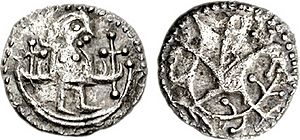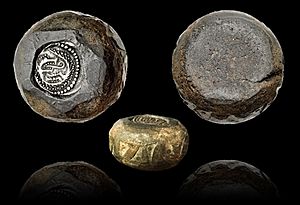Sceat facts for kids
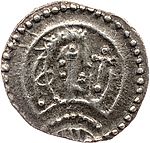 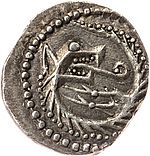 |
|
| Front: A head with a crown, facing right, with a cross. | Back: A curled wolf with its tongue out, facing right. |
| A silver sceat from Series K, likely made in London around 710-720 AD. | |
A sceat (pronounced SHAT) was a small, thick silver coin made in England, Frisia, and Jutland a long time ago, during the Anglo-Saxon period. These coins usually weighed about 0.8 to 1.3 grams, which is less than a modern paperclip!
Contents
What is a Sceat?
The word "sceat" comes from an old English word meaning "wealth," "money," or "coin." People started calling these coins "sceats" in the 1600s, based on old laws from kingdoms like Mercia and Kent. However, it's likely that people back then called them "pennies," just like the silver coins that came after them.
There are many different kinds of sceats, over a hundred! Experts have grouped them into different types, often using numbers or letters. Thanks to metal detectors, many more of these coins have been found in the last 30 years. This has helped us understand a lot more about them. We now know that sceats were used every day across eastern and southern England in the early 700s.
Words and Symbols on Sceats
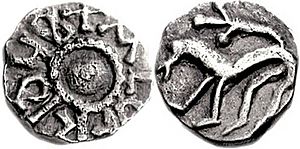 |
|
| Front: The name "Aldfridvs" around a circle in the middle. | Back: An animal with four legs, facing left. |
| A silver sceat from Aldfrith of Northumbria, made between 685-704 AD. | |
Most sceats don't have any writing on them. But a few do! Some coins mention the city of London, where they were made. Others have short runic writings, like 'Aethiliraed' or 'Efe'. These names probably belonged to the people who made the coins, called moneyers, not kings.
Cool Pictures on Sceats
Sceats might be tricky to organize and date, but they have amazing designs! These designs show influences from Celtic, Roman, and Germanic cultures. You can find all sorts of pictures on them, including:
- Human figures
- Animals
- Birds
- Crosses
- Plants
- Even monsters!
One type of sceat (Series U) was thought to be linked to King Aethelbald of Mercia (who ruled from 716-757 AD) because of its pictures. However, new research suggests this is probably not true. Some experts also think that certain sceats were made by church leaders, like bishops or abbots. This means that making coins wasn't just for cities or kings; they were used for many different payments, not just for buying and selling things.
Where Sceats Were Made
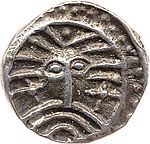 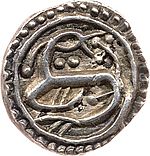 |
|
| Front: A face with a beard, with a cross on each side. | Back: A curled "dragon" facing right. |
| A silver sceat from Series X, made in Ribe, Denmark, around 710-720 AD. | |
It's hard to know exactly which city or kingdom made each sceat. We mostly figure this out by studying where the coins are found. Since the 1970s, many have been discovered using metal detectors. For example, we are quite sure that Series H sceats were made in Wessex (especially Southampton). Series S coins are linked to Essex. In Denmark, Series X coins are thought to have come from the early trading town of Ribe.
Figuring out the exact timeline of sceats is also tough. Some of the very first sceats have designs similar to older gold coins called "thrymsas." By comparing them to coins from the Frankish kingdom (which we know more about), we can guess that these early sceats were made in the 680s. We know that sceats were also made in the Frisian town of Dorestad (in the Netherlands). They were a common type of money in the Frankish kingdom until a new money system was started in 755 AD.
The "primary series" of sceats were made and used for about 30 to 40 years after 680 AD. These coins were usually made of good quality metal and weighed about 1 to 1.3 grams. Most of them were made in Kent and near the Thames Estuary. A few were also made in Northumbria, and some of these even had the name of King Aldfrith (who ruled from 685-704 AD).
The "secondary series" of sceats were made from about 710 to 750 AD. During this time, many more coins were made all over southern and eastern England, in almost every major Anglo-Saxon kingdom. We can link different types of these coins to Wessex, Mercia, Sussex, Essex, Kent, Northumbria, and East Anglia.
During this time, people often copied coins, and the quality of the metal could change a lot. The weight of the coins also varied, from about 0.8 to 1.3 grams. There aren't many hidden collections of coins (called "hoards") from this period, which makes it hard to create a perfect timeline. Any new discovery could change what experts currently understand! It's also hard to say exactly when sceats stopped being made. It's likely that for a few decades in the middle of the 700s, very few, if any, coins were made in England.
Gallery
- Sceattas


